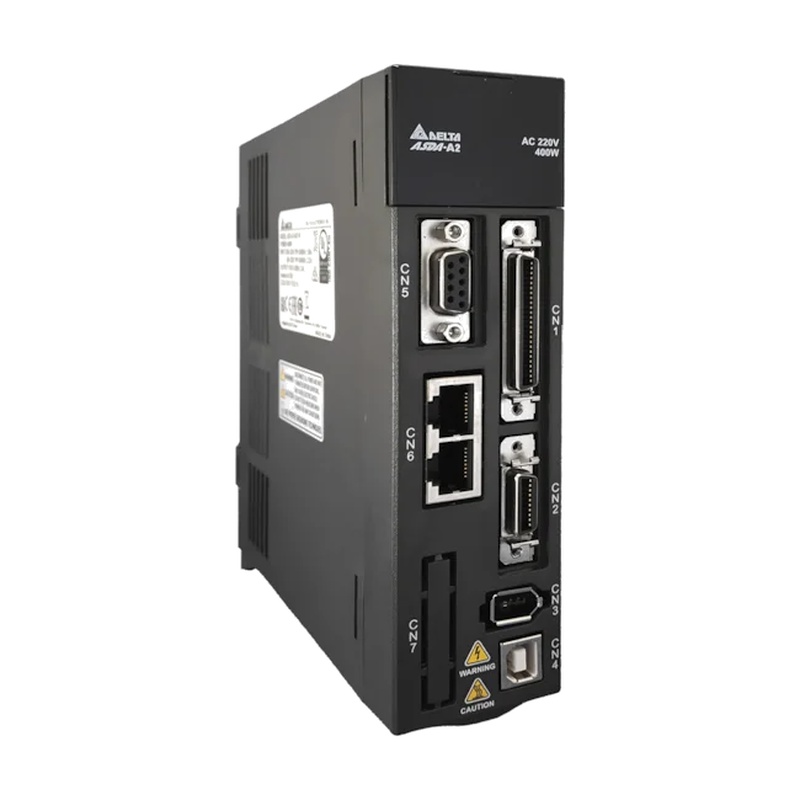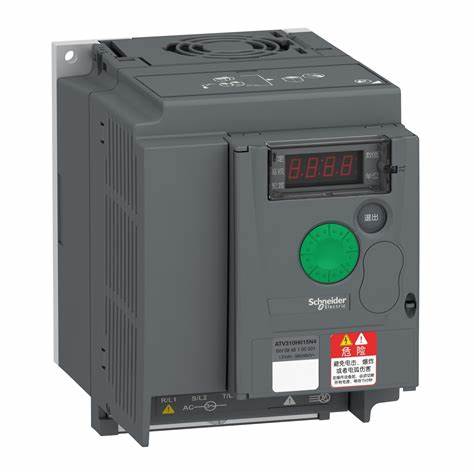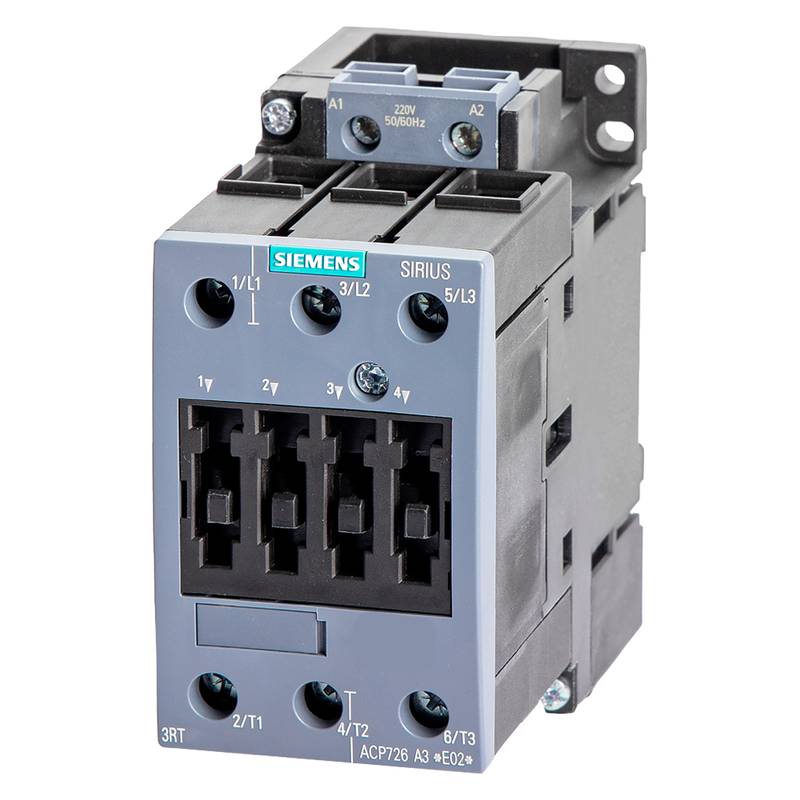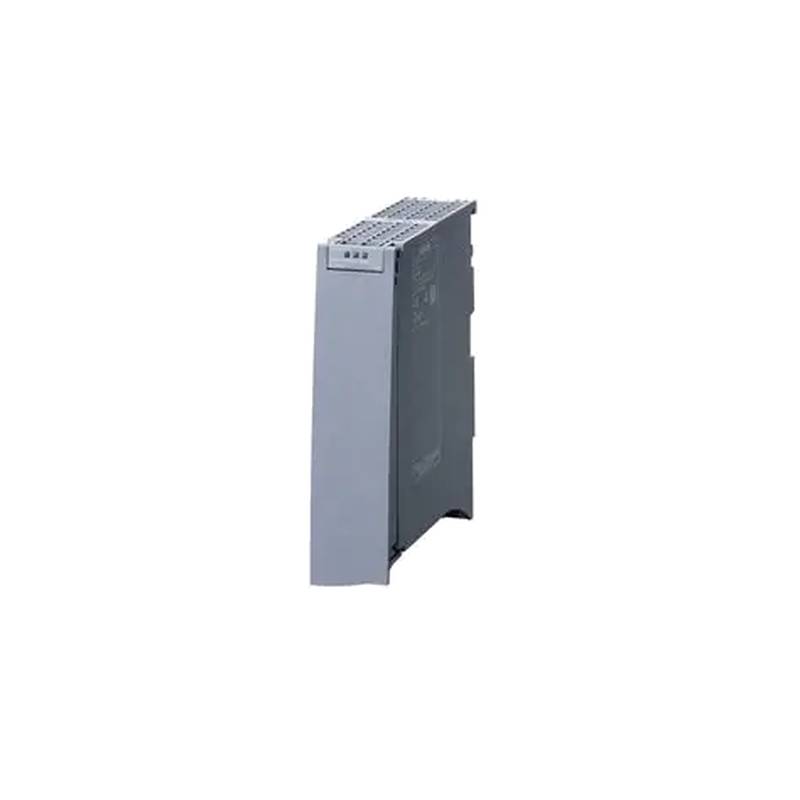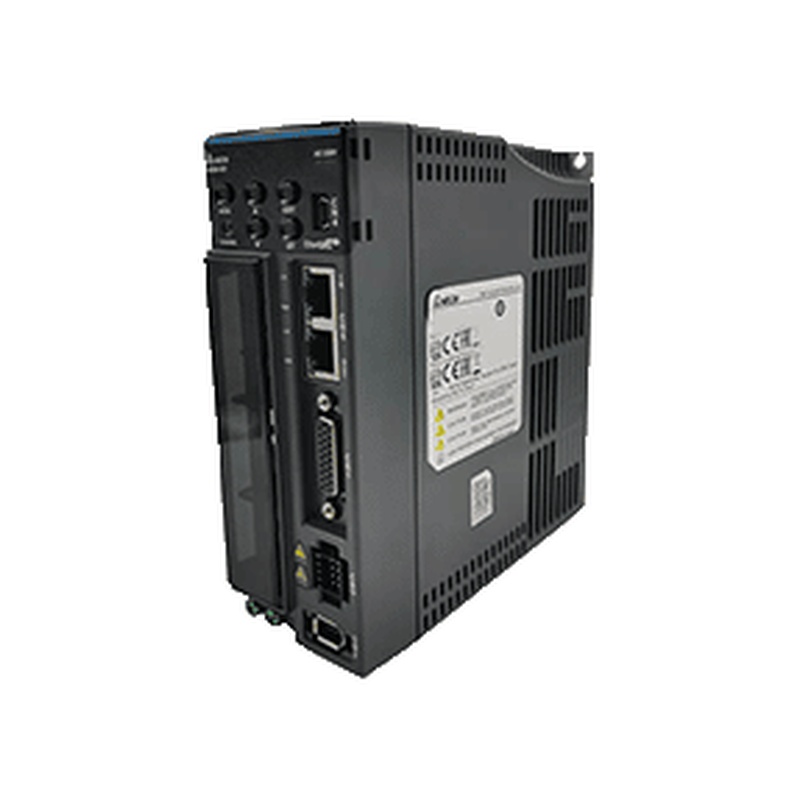
The Delta ASD-B3-3023-F is a high-power industrial three-phase servo system designed for demanding automation tasks. This next-generation servo drive from Delta builds upon the success of previous ASDA series, offering enhanced performance, faster response times, and improved precision. With a 3.1 kHz bandwidth, it excels in applications requiring rapid and accurate motion control, significantly reducing settling times by up to 40% compared to older models. The ASD-B3-3023-F supports 24-bit encoders for high resolution feedback and is compatible with various Delta servo motors, including B3, B2, A3, and A2 series. Its robust design and advanced features make it a powerful solution for optimizing production efficiency and output value across a wide array of industries.
Product Specifications
| Feature | Specification |
| :------------------ | :------------------------------------------------- |
| Model | ASD-B3-3023-F |
| Power | 3 kW |
| Output Current | 19.4 Arms |
| Input Voltage | 1-Phase/3-Phase 220 VAC |
| Bandwidth | 3.1 kHz |
| Encoder Resolution | 24-bit |
| Motor Speed Support | Up to 6000 rpm |
| Communication | RS485, E-Cam, CANopen, EtherCAT, DMCNET |
| Control Modes | Pulse, Analog, Speed, Position, PR Mode |
| Special Features | Vibration suppression, Auto-tuning, DC Bus Sharing |
Core Features & Market Positioning
The Delta ASD-B3-3023-F positions itself as a leading solution for high-performance servo applications. Its key competitive advantage lies in its significantly improved responsiveness and reduced settling times, which directly translate to increased productivity and efficiency on the factory floor. The integration of advanced features like auto-tuning and vibration suppression simplifies setup and enhances operational stability, appealing to a broad market seeking both performance and ease of use. Furthermore, its compatibility with a wide range of Delta servo motors and its support for multiple high-speed communication protocols (including EtherCAT) allow for flexible integration into diverse automation architectures. The inclusion of a Safe Torque Off (STO) function, compliant with SIL2 standards, underscores Delta's commitment to safety in industrial environments. This combination of cutting-edge technology, user-centric features, and strong safety integration makes the ASD-B3-3023-F a compelling choice in the industrial servo market.
Key Application Scenarios
The Delta ASD-B3-3023-F servo system is engineered for precision and power, making it ideal for a multitude of industrial applications. Its high bandwidth and fast response are critical for dynamic processes found in machine tools, where precise positioning and rapid tool changes are paramount. In the electronics and semiconductor industries, the system's accuracy is essential for intricate pick-and-place operations and automated assembly lines. Industrial robots benefit from the system's ability to handle complex, high-speed movements with consistent reliability. The printing and packaging sectors rely on the ASD-B3-3023-F for synchronized motion control in high-speed production lines, ensuring accuracy and reducing waste. Furthermore, its suitability extends to textile machinery, warehousing automation, and medical equipment, where precise and repeatable motion is a core requirement.
Practical System Integration Guidance
Integrating the Delta ASD-B3-3023-F servo system into existing or new machinery involves careful consideration of wiring, power, and communication. The drive accepts single or three-phase 220 VAC input, requiring appropriate power supply connections to terminals L1, L2, and L3. Motor connections are made via terminals U, V, and W. Proper grounding is essential for safety and signal integrity. For communication, the ASD-B3-3023-F supports various industrial protocols such as RS485, CANopen, and EtherCAT, allowing seamless integration with PLCs and other control systems. Configuration and commissioning are streamlined by Delta's ASDASoft software, which features an intuitive graphical interface and auto-tuning capabilities. Users can leverage features like PR (Programmed Path) mode, which supports up to 99 motion paths, for complex motion sequences. Always refer to the official Delta ASDA-B3 Series User Manual for detailed wiring diagrams and configuration parameters specific to your application.
Operation and Risk Mitigation
Safe and efficient operation of the Delta ASD-B3-3023-F servo system is paramount. It is crucial to install the drive within a shielded control cabinet to minimize electromagnetic interference and ensure optimal performance. Regular inspections are vital; daily checks should include ambient temperature and humidity, input voltage, as well as looking for abnormal vibrations, noises, smells, or visible damage to the drive. The system is equipped with a built-in Safe Torque Off (STO) function, which complies with IEC/EN 61800-5-2 and SIL2 standards, providing a critical safety layer to prevent unexpected motor movement during maintenance or emergency situations. Troubleshooting common issues often involves consulting the drive's diagnostic display and referencing the alarm codes detailed in the user manual. Alarms can range from encoder errors (e.g., AL036, AL064) to motion control issues (e.g., AL007 excessive deviation) and communication faults. Proper power cycling or alarm reset procedures, as specified for each alarm code, should be followed.
Scalability & Long-Term Value
The Delta ASD-B3-3023-F servo system offers excellent scalability and long-term value for industrial automation projects. Its compatibility with previous Delta servo motor generations (B2, A3, A2) and its support for advanced communication protocols like EtherCAT enable straightforward upgrades and integration into evolving automation infrastructures. The system's modular design and the availability of various motor options (different inertia ranges) allow users to precisely match performance requirements and scale their systems as needs change. Furthermore, Delta's commitment to developing IIoT-ready solutions suggests future compatibility with digital manufacturing platforms, enhancing the long-term value of this investment. The availability of comprehensive documentation, software tools like ASDASoft, and a global support network also contribute to the longevity and ease of maintenance of systems equipped with the ASD-B3-3023-F.
Frequently Asked Questions
What are the main advantages of the Delta ASD-B3-3023-F servo drive?
The Delta ASD-B3-3023-F offers a 3.1 kHz bandwidth for high responsiveness. It achieves up to a 40% reduction in settling time compared to previous models. This drive also supports 24-bit encoders for enhanced precision.
Key advantages include improved auto-tuning and vibration suppression features. These functionalities simplify setup and ensure smoother, more stable operation. The drive is designed for high-power industrial applications, making it robust and reliable.
Additionally, it integrates a Safe Torque Off (STO) function for enhanced operator safety. Its broad compatibility with various Delta servo motors and communication protocols adds to its flexibility and long-term value.
What technical specifications are critical for the Delta ASD-B3-3023-F?
A critical specification is its 3 kW power rating and 19.4 Arms output current. This indicates its capability for high-demand industrial tasks. The 3.1 kHz bandwidth is crucial for high-speed, precise motion control.
The system's support for 220 VAC single or three-phase input makes it versatile for different power setups. Its compatibility with 24-bit encoders ensures high positional accuracy and feedback resolution.
Key communication interfaces include RS485, CANopen, EtherCAT, and DMCNET, vital for seamless integration into automated systems.
What industries commonly use the Delta ASD-B3-3023-F servo system?
This servo drive is extensively used in machine tool manufacturing for precise cutting and shaping operations. It's also vital in electronics and semiconductor production for delicate assembly tasks.
Robotics applications benefit greatly from its high-speed and accurate motion control capabilities. The printing and packaging industries utilize it for synchronized movements in high-throughput production lines.
Other significant sectors include textile manufacturing, advanced warehousing automation, and specialized medical equipment where precision is non-negotiable.
How does the Delta ASD-B3-3023-F integrate into existing automation systems?
Integration is facilitated by its support for multiple communication protocols like EtherCAT, CANopen, and RS485. This allows easy connection to PLCs and other control devices.
The drive's compatibility with existing Delta servo motors (B2, A3, A2 series) simplifies upgrades and system expansions. Proper wiring of power and motor leads is essential, following the guidelines in the user manual.
Delta's ASDASoft configuration software provides a user-friendly interface for setup and parameter adjustment, streamlining the commissioning process.
What are the safety features of the Delta ASD-B3-3023-F?
A primary safety feature is the integrated Safe Torque Off (STO) function. This function is compliant with IEC/EN 61800-5-2 and SIL2 standards, ensuring rapid power cutoff to the motor in emergencies.
Installation within a shielded control cabinet is recommended to prevent electromagnetic interference and ensure system stability and safety.
Regular operational checks and adherence to specified load rates (80% or less) and operating times (20 hours/day) are crucial for safe and long-term operation.
Can the Delta ASD-B3-3023-F be used with older Delta servo motors?
Yes, the ASDA-B3 series drives, including the ASD-B3-3023-F, are designed to be compatible with older Delta servo motors such as the B2, A3, and A2 series. This backward compatibility is a significant advantage for system upgrades.
This compatibility allows users to incrementally update their systems, replacing older drives or motors without needing a complete overhaul. It provides flexibility in managing existing hardware while adopting newer, more performant drive technology.
When pairing with older motors, it is still advisable to consult the compatibility charts in the official Delta documentation to ensure optimal performance and safety.
What are common troubleshooting steps for Delta ASD-B3-3023-F alarms?
Common troubleshooting involves observing the 7-segment display on the drive for alarm codes (e.g., ALxxx). The user manual provides detailed descriptions and corrective actions for each alarm.
For many alarms, a simple reset action via a digital input (DI.ARST) or parameter setting (P0.001) might clear the fault. For example, AL007 (excessive speed deviation) or AL036 (encoder alarm) often require specific reset procedures.
If an alarm persists or indicates a hardware failure, contacting a local distributor or Delta support is recommended. For instance, persistent encoder issues might require returning the motor for service.
How does the ASD-B3-3023-F improve upon the previous ASDA-B2 series?
The ASD-B3-3023-F significantly enhances responsiveness, boasting a 3.1 kHz bandwidth compared to the ASDA-B2's typical 1 kHz. This leads to a substantial reduction in settling time by up to 40%.
It supports higher motor speeds, up to 6000 rpm, and offers increased torque capabilities. The inclusion of 24-bit encoders provides superior positional feedback resolution over older encoder types.
Delta has also incorporated advanced features like enhanced auto-tuning, vibration suppression, and system analysis tools, which were not as prominent or advanced in the B2 series, simplifying commissioning and optimization.
What are the communication options available with the ASD-B3-3023-F?
The Delta ASD-B3-3023-F supports a comprehensive range of industrial communication protocols. These include RS485 for simpler serial communication, CANopen and DMCNET for networked control, and EtherCAT for high-speed, deterministic real-time communication.
EtherCAT, in particular, allows for very high communication speeds, up to 8 kHz, minimizing wiring complexity and inspection time in multi-axis systems.
These diverse options ensure the drive can be seamlessly integrated into various automation architectures, from standalone systems to complex, networked industrial environments.
What is the typical power consumption or efficiency of the ASD-B3-3023-F?
While specific energy consumption figures vary based on the load and operating cycle, the ASDA-B3 series is recognized for its high efficiency. Features like DC bus sharing can contribute to energy savings in multi-axis systems by allowing drives to share regenerative energy.
The drive's advanced motor control algorithms and optimized performance parameters help minimize energy losses during operation. This leads to more efficient use of power compared to older or less advanced servo systems.
The system's ability to reduce settling times and optimize acceleration/deceleration further contributes to overall efficiency by shortening cycle times and reducing the energy required per operation.














